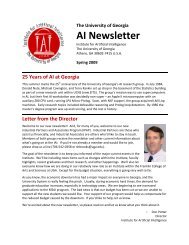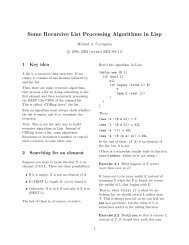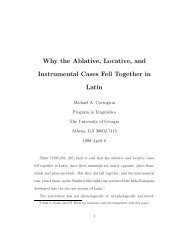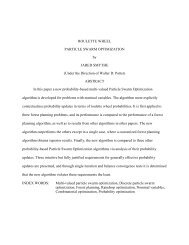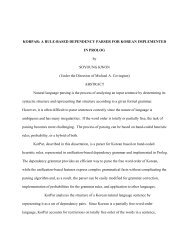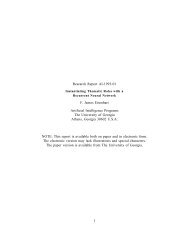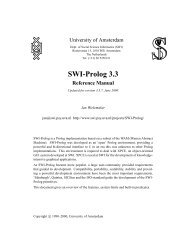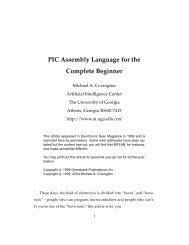human judgment in diagnosing problem behavior in horses using
human judgment in diagnosing problem behavior in horses using
human judgment in diagnosing problem behavior in horses using
You also want an ePaper? Increase the reach of your titles
YUMPU automatically turns print PDFs into web optimized ePapers that Google loves.
<strong>problem</strong>. This is because most <strong>horses</strong> are good <strong>in</strong> <strong>behavior</strong>. Any horse however can<br />
become rebellious with improper care or handl<strong>in</strong>g (Hill, 2000) or when it feels threatened<br />
and at unease with its environment.<br />
2.1 Visual and Environmental Cues<br />
A horse is likely to communicate feel<strong>in</strong>gs and dislike towards a <strong>human</strong> by show<strong>in</strong>g<br />
expressions such as anger by kick<strong>in</strong>g or bit<strong>in</strong>g, fear by walk<strong>in</strong>g away, anxiety or<br />
depression or stress by not eat<strong>in</strong>g or not show<strong>in</strong>g <strong>in</strong>terest <strong>in</strong> anyth<strong>in</strong>g. This shows that a<br />
horse is superbly equipped for visual communication, which is probably the primary<br />
mode for express<strong>in</strong>g feel<strong>in</strong>gs (Aronson & Dodman, 2003). The first clue to notic<strong>in</strong>g these<br />
expressions would be from the animal’s posture. In most situations, either both the head<br />
and tail will be up or down. For example, with <strong>in</strong>creas<strong>in</strong>g excitement, both head and tail<br />
tend to become higher. A submissive horse has a lowered head and tail and seems to be<br />
try<strong>in</strong>g to go further down towards the ground. A somewhat elevated head with a tucked<br />
or partially raised tail may accompany a defensive threat. However, a sleepy horse, a<br />
horse that is excited to check out its new environment and a horse that is trott<strong>in</strong>g would<br />
show the same signals as dropp<strong>in</strong>g the head and tail <strong>in</strong>dicat<strong>in</strong>g that context is also an<br />
important factor <strong>in</strong> judg<strong>in</strong>g posture and attribut<strong>in</strong>g it to the animal’s <strong>behavior</strong> (Aronson &<br />
Dodman, 2003).<br />
Another important visual cue is by look<strong>in</strong>g at a horse’s facial expression,<br />
particularly the movements of its ears, mouth and nose. There are 13 pairs of muscles<br />
adjust<strong>in</strong>g the position of each ear and ten pairs mov<strong>in</strong>g the nostrils, mouth and lips. The<br />
14






